About 90 minutes south of Lincoln City on the Oregon Coast lies the Oregon Sand Dunes National Recreation Area. According to several sources, these are the largest coastal sand dunes in North America, stretching 40 miles north to south along the coast of Southern Oregon.
The Oregon Dunes are a bit unusual in that they lie within a National Forest. The dunes can’t really be seen from the main road because of the heavily wooded area which surrounds them. There are multiple state parks and trails within the National Forest, some of which are open to Off Highway Vehicles and some of which are reserved for pedestrians.
We arrived in the area on a Saturday and unfortunately (and nonsensically, in my opinion) we discovered that the visitor center was closed until Monday. We tried several access points that were suggested online, but weren’t really able to find a trail into the heart of the dunes until we were at last able to go to the visitor center Monday morning for advice and a map.
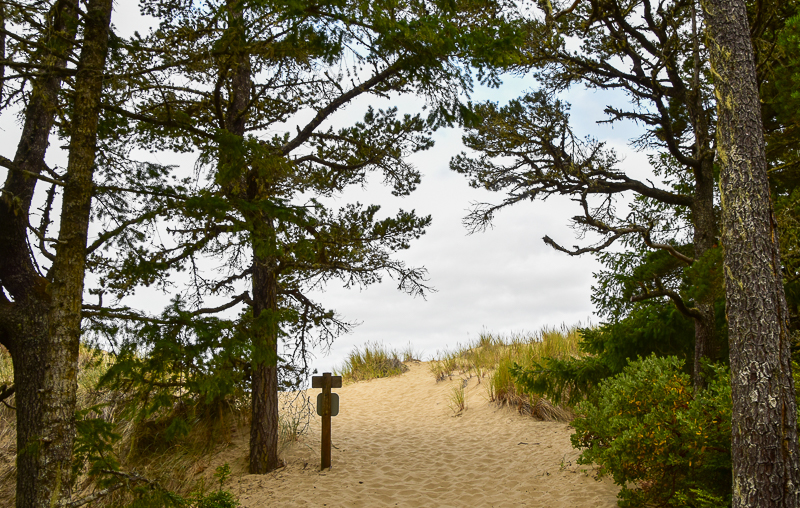
The further you progress into the heart of the dunes, the lesser the vegetation and the looser and finer grained the sand becomes. It is quite challenging to walk on because it moves and spreads beneath your feet. Fortunately, on the highest ridges, the sand has been compressed by rain and wind so it is much easier to walk upon.
As you can see in the photos below, the wind shapes the sand into peaks and valleys, finely sculpted ridges, and graceful curves and undulations. Its a bit otherworldly.
As we climbed on the dunes, the sun peaked through the clouds for a while and the sky cleared. It was the first blue sky we had seen in at least a week. I was grateful to finally have a bit of blue background to contrast with the sand.
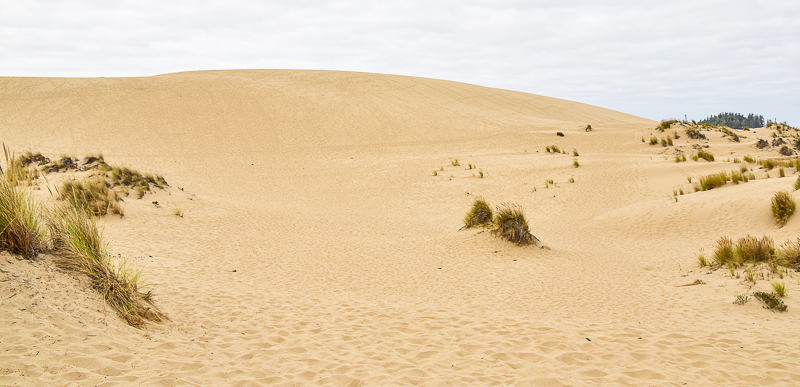
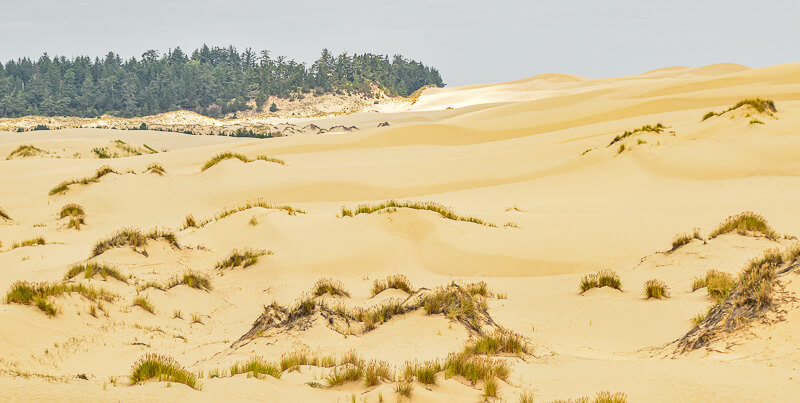
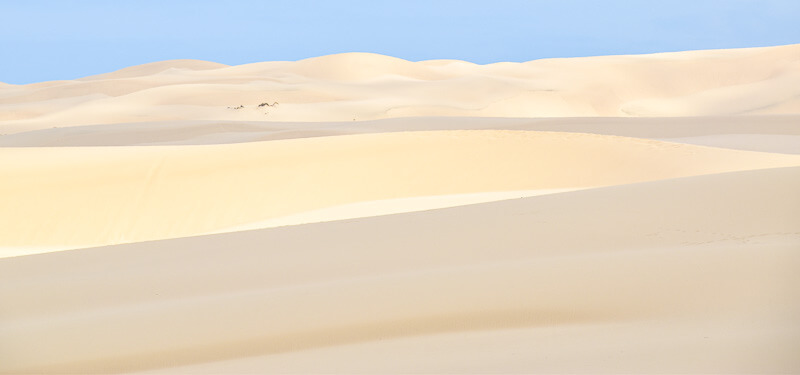
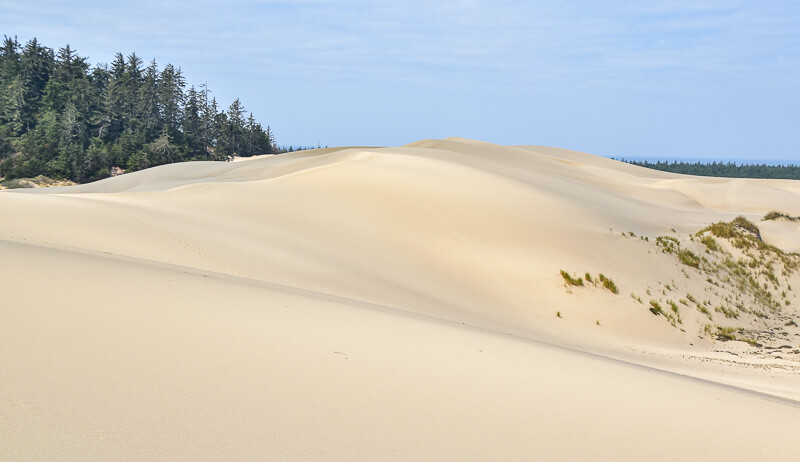
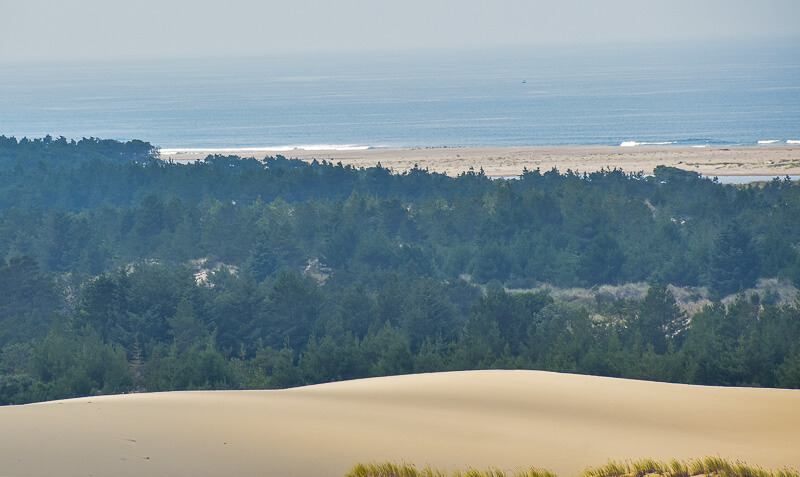
Amazing! I’m so glad you’re having a wonderful time.
Those strips of blue are almost startling to see, but wow, what some great shots. Your description of walking on the dunes took me back years to my time in Alamosa, Colorado and the Great Sand Dunes at the foot of Mosca pass in the Sangre de Cristo range. The sand is carried from the San Juan Mountains to the west by the wind and falls out as the wind goes through the pass. Like the dunes you shot, they look different every time you visit them, pretty much an ongoing work of art.
John,
Your description of the dunes as an ongoing work of art was dead on. I find much of the landscape in California, Arizona, Utah and other places I’ve been in the western US fit that description as well. I love being surrounded by such beauty. Thanks for your comments.
The juxtaposition of the dunes and the forest, with the forest between the trees and ocean, is amazing, I’ve never seen that. I wonder how that happened to be?
I wondered about that too and tried to find out. There is some information about the dunes and their formation on Wikipedia (they formed over 100,000 years ago) which indicates that the dunes closest to the water are the youngest. Apparently the winds which form the dunes are seasonal, so that the sand isn’t always in motion. I suspect that allows vegetation to grow in some places, which would include trees I guess. I’m more of a social science girl; I can do natural science if I can find an answer in 5 or 10 minutes. If I have to wade through pages and pages, I surrender!